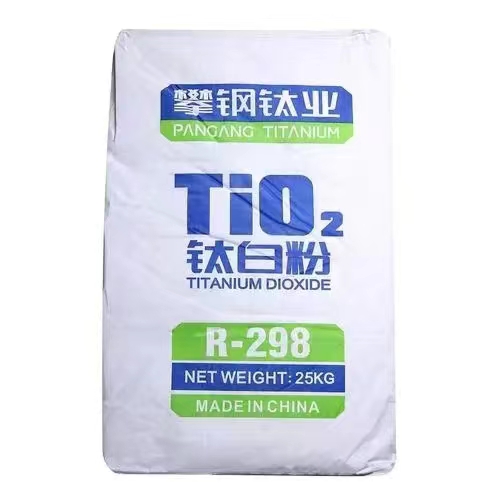
Май . 27, 2024 15:00 Back to list
Titanium Dioxide in Food — Should You Be Concerned?
From dyes to flavorings, many people are becoming increasingly aware of the ingredients in their food.
One of the most widely used food pigments is titanium dioxide, an odorless powder that enhances the white color or opacity of foods and over-the-counter products, including coffee creamers, candies, sunscreen, and toothpaste (1Trusted Source, 2Trusted Source).
Variations of titanium dioxide are added to enhance the whiteness of paint, plastics, and paper products, though these variations differ from the food-grade ones for things we eat (1Trusted Source, 2Trusted Source).
Still, you may wonder whether it’s safe for consumption.
This article reviews the uses, benefits, and safety of titanium dioxide.
Titanium dioxide has many purposes in both food and product development.
Food quality
Due to its light-scattering properties, small amounts of titanium dioxide are added to certain foods to enhance their white color or opacity (1Trusted Source, 3Trusted Source).
Most food-grade titanium dioxide is around 200–300 nanometers (nm) in diameter. This size allows for ideal light scattering, resulting in the best color (1Trusted Source).
To be added to food, this additive must achieve 99% purity. However, this leaves room for small amounts of potential contaminants like lead, arsenic, or mercury (1Trusted Source).
The most common foods containing titanium dioxide are chewing gum, candies, pastries, chocolates, coffee creamers, and cake decorations (1Trusted Source, 3Trusted Source).
Food preservation and packaging
Titanium dioxide is added to some food packaging to preserve the shelf life of a product.
Packaging containing this additive has been shown to decrease ethylene production in fruit, thus delaying the ripening process and prolonging shelf life (4Trusted Source).
Furthermore, this packaging has been shown to have both antibacterial and photocatalytic activity, the latter of which reduces ultraviolet (UV) exposure (5Trusted Source, 6).
Titanium Dioxide Rutile Tio2 POWDER Titanio Dioxide Pigment
Cosmetics
Titanium dioxide is widely used as a color-enhancer in cosmetic and over-the-counter products like lipsticks, sunscreens, toothpaste, creams, and powders. It’s usually found as nano-titanium dioxide, which is much smaller than the food-grade version (7Trusted Source).
It’s particularly useful in sunscreen as it has impressive UV resistance and helps block the sun’s UVA and UVB rays from reaching your skin (6Trusted Source).
However, since it’s photosensitive — meaning it can stimulate free radical production — it’s usually coated in silica or alumina to prevent potential cell damage without reducing its UV-protective properties (7Trusted Source).
Although cosmetics are not meant for consumption, there are concerns that titanium dioxide in lipstick and toothpaste may be swallowed or absorbed through the skin.
SUMMARY
RisksIn recent decades, concerns for the risks of titanium dioxide consumption have grown.
Group 2B carcinogen
Though the Food and Drug Administration (FDA) categorizes titanium dioxide as Generally Recognized as Safe (8), other organizations have issued warnings.
The European Food Safety Authority (EFSA) has concluded that titanium oxide should not be considered safe as a food additive, due to uncertainties about possible inflammation and neurotoxicity (9Trusted Source).
The Scientific Committee on Consumer Safety (SCCS) warns against sprayable products and powders that may expose users’ lungs to titanium dioxide through inhalation (10).
The International Agency for Research on Cancer (IARC) has listed titanium dioxide as a Group 2B carcinogen — an agent that may be carcinogenic but lacks sufficient animal and human research. This has caused concern for its safety in food products (11, 12).
This classification was given, as some animal studies found that inhaling titanium dioxide dust might cause the development of lung tumors. However, IARC concluded that food products containing this additive do not pose this risk (11).
Therefore, today, they only recommend limiting titanium dioxide inhalation in industries with high dust exposure, such as paper production (11).
Absorption
There is some concern regarding skin and intestinal absorption of titanium dioxide nanoparticles, which are less than 100 nm in diameter.
Some small test-tube research has shown that these nanoparticles are absorbed by intestinal cells and may lead to oxidative stress and cancer growth. However, other research has found limited to no effects (13Trusted Source, 14Trusted Source, 15Trusted Source).
Moreover, a 2019 study noted that food-grade titanium dioxide was larger and not nanoparticles. Hence, the authors concluded that any titanium dioxide in food is absorbed poorly, posing no risk to human health (3Trusted Source).
Finally, research has shown that titanium dioxide nanoparticles do not pass the first layer of the skin — the stratum corneum — and are not carcinogenic (7Trusted Source, 15Trusted Source).
Organ accumulation
Some research in rats has observed titanium dioxide accumulation in the liver, spleen, and kidneys. That said, most studies use doses higher than what you would typically consume, making it difficult to know if these effects would happen in humans (16Trusted Source).
A 2016 review by the European Food Safety Authority concluded that titanium dioxide absorption is extremely low and any absorbed particles are mostly excreted through feces (17Trusted Source).
However, they did find that minor levels of 0.01% were absorbed by immune cells — known as gut-associated lymphoid tissue — and may be delivered to other organs. Currently, it’s unknown how this may affect human health (17Trusted Source).
Although most studies to date show no harmful effects of titanium dioxide consumption, few long-term human studies are available. Therefore, more research is needed to better understand its role in human health (16Trusted Source, 18Trusted Source).
-
Essential Guide to Calcium Powder Quotes – Pricing, Quality & Global Insights
NewsNov.24,2025
-
Reliable Anatase TiO2 Pigment Quotes for Sustainable Industry Use | CQ Titanium Dioxide
NewsNov.24,2025
-
Understanding Lithopone B311 Powder Quotes – Market Insights & Applications
NewsNov.23,2025
-
Reliable 30-50nm TiO2 Powders Quotes for Advanced Industrial Use | CQTitanium
NewsNov.23,2025
-
Comprehensive Guide on Lithopone Red Pigments Quotes | Industry Insights & Pricing
NewsNov.22,2025
-
Comprehensive Insights into the Lithopone Market: Global Trends & Applications
NewsNov.22,2025

